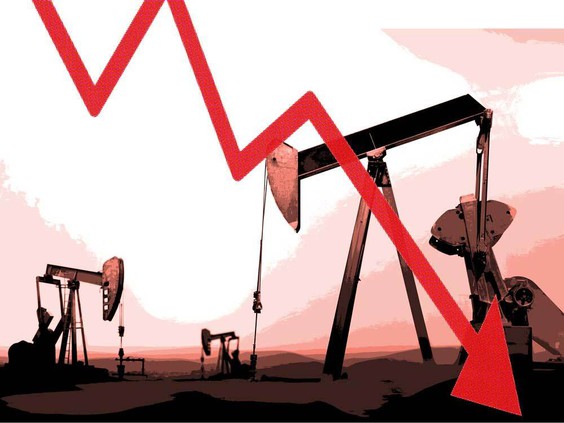Step one: diversify her portfolio.
A woman we’ll call Lucy, 60, lives in Alberta. Retired after 38 years as an administrator in the energy industry, she has a pension that provides $3,700 per month before tax. She has returned to work on a contract that pays her $4,000 per month before tax. She worries that her income at 65, when the pension loses a bridge and drops to $3,100 per month and her CPP, $731 per month if she starts at 60 as she intends, plus $614 in OAS per month at 65, will not sustain her way of life.
Lucy made her retirement plans decades ago when she loaded her RRSP with shares of her employer, a global energy company. She felt her company’s business was bulletproof and with a loyal employee’s faith, she doubled down on her career. Not only was her paycheque dependent on its health, but also her post-paycheque retirement. Her belief in the company’s ability to support her as well in retirement as it did while she was working crashed along with global markets this year, and the world’s increasing disdain for fossil fuels hasn’t helped either. Her employer’s shares have lost more than 60 per cent of their 2016 peak value.
Her concerns are magnified by spending plans — a new car for $30,000, a wish to travel and the cost of a time share, $1,200 per year. Those spending plans will limit her choices in retirement.
The dilemma
Family Finance asked Eliott Einarson, a financial planner who heads the Winnipeg office of Ottawa-based Exponent Investment Management Inc., to work with Lucy. “The core question is whether she can afford to forgo her contract work and enjoy the freedom and travel she has planned for in her retirement,” he explains.
The problem of adequacy of income has been exacerbated by the stock market. Lucy invested much of her savings in the stock of her employer. She fears that the travel she craved before the rout of energy stocks is not going to happen. She is eager to know what discretionary income she will have. Her recent purchase of a time share for $1,000 plus a $100 monthly maintenance fee and charges for time she uses facilities is a low-cost way to travel. She would like more — perhaps a month in the sun each winter, perhaps more time with her children in southern Ontario.
A stressed budget
Her travel plans are modest, but her problem is to determine if she can retire fully and sustain her way of life for 35 years. Currently, Lucy allocates $6,200 per month to living expenses excluding savings and debt service. That’s her minimum cost of living. It includes $450 per month for travel and entertainment. To be able to enjoy time in the sun in winter she would need to maintain a $4,500 monthly after tax income for at least a decade. That would allow her to increase her monthly travel budget by another $500 to $800 per month.
At present, Lucy saves $1,767 per month. When her pension bridge ends at 65, her pension will drop by $600 per month and be replaced by OAS which has a present payment rate of $614 per month. That will keep her pensions other than CPP at about $3,700 for life. She plans to take CPP later this year, adding $731 per month before tax to her income.
Lucy’s net worth at present consist mainly of $6,000 of savings, $30,000 in her TFSA and $156,000 in RRSPs. She has a $5,000 line of credit. Her car has an estimated value of $5,000. Her financial assets total $192,000, not including the cash value of her permanent life insurance, which is valued at $70,000. If she were to retire later this year and pay off the line of credit with cash and trade in her old car for a new $30,000 model with money from her TFSA, her net worth apart from the life insurance would be $157,000, which is just about the value of her RRSP.
Retirement finances
If Lucy works at least part-time from 60 to 65, the balance of her RRSPs could grow at three per cent after inflation to $180,850 without any new contributions. That capital with the same growth rate could then generate $8,958 per year before tax for the following 30 years.
She could also delay the start of CPP from 60 to 65 and receive a boost of payouts from $730 per month, which is the age 65 payout cut by 36 per cent for an early start, to $1,140 per month or $13,680 per year. Those changes would raise her income to $8,958 RRSP, $7,362 OAS and $37,200 company pension for total taxable income of $67,200 before tax. After 20 per cent average tax, she would have $4,480 per month to spend.
Lucy would have more money in her retirement. Her investment portfolio is still dominated by the stock of her employer. She needs to diversify. It may hurt to crystallize a loss, Einarson says, but the advantage of safety in diversification is compensation.
Rebuilding her RRSP capital will be a slow process. Given that she will be in a low tax bracket, RRSP savings at an average 20 per cent of income offer less advantage than building up her $30,000 TFSA for permanent tax relief, Einarson notes. GICs and other fixed-income investments offer scant income these days. Investment in a diversified portfolio through low-fee exchange traded funds or balanced ETFs with stocks and modest bond content offer better long run returns.
The tragedy of Lucy’s portfolio loss is a reflection of her faith in her company. Over time, she can rebuild her financial assets. By age 75 within RRSP or TFSA portfolios, she can have what she lost by the energy industry meltdown. Doubling down on a losing bet is less likely to work than a broadened portfolio. The lesson of all investing is that the past offers few lessons other than that trends, such as the former ascendance of energy stocks, can change.
Diversification can be achieved with exchange traded index funds with fees as low as 1/10th of one per cent. The broader the ETF, the less individual asset wobbles matter, Einarson notes.
Retirement stars: Two retirement stars ** out of five






